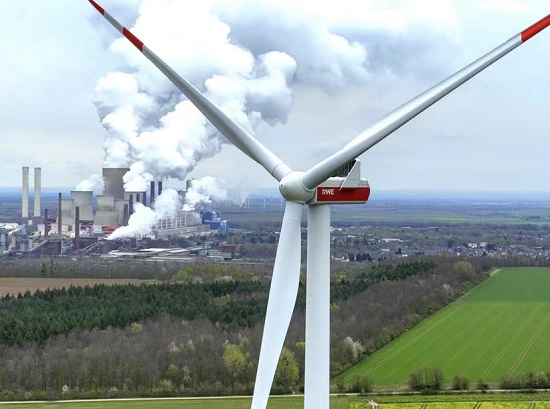Global carbon pricing revenue to reach $84 billion in 2021. All Chinese state-owned listed companies to disclose ESG reports by 2023. China Salt Lake Co., Ltd. invests in the construction of a 40,000-ton lithium salt project

Global carbon pricing revenue to reach $84 billion in 2021
The World Bank released the 2022 Global Carbon Pricing Status and Trends Report. According to the report, there are currently 68 direct carbon pricing tools in use worldwide, including 36 carbon taxes and 32 carbon emissions trading systems (ETSs), which together cover 23% of global greenhouse gas emissions.
Since the release of the 2021 Global Carbon Pricing Status and Trends Report, four new carbon pricing tools have been implemented globally, and three countries including Israel have announced new carbon pricing policy plans. In 2021, carbon prices in the European Union, California, New Zealand, South Korea, Canada and many other places hit record highs, resulting in a record $84 billion in global carbon pricing revenue, an increase of 60% over the previous year.
Among them, ETSs and carbon tax revenue accounted for 67% and 33% respectively, and ETSs revenue exceeded carbon tax revenue for the first time. The value of the annual voluntary carbon market surpassed $1 billion for the first time, driven by corporate commitments. While Article 6 of the Paris Agreement outlines new rules for the international carbon market, compliance demand for carbon credits remains limited.
ESG report
China’s SASAC: listed companies of central enterprises must disclose ESG reports by 2023
According to news on May 27, the State Council of China recently issued the “Work Plan for Improving the Quality of Listed Companies Controlled by Central Enterprises”, in order to further crack down on the weak innovation and development capabilities of some listed companies controlled by central enterprises, non-standard operation and governance, insufficient market allocation of resources, and insufficient value. Prominent problems such as the mismatch between realization and value creation.
The “Plan” clearly proposes to implement the new development concept and explore the establishment of a sound ESG system. The specific requirements are to coordinate and promote the complete, accurate and comprehensive implementation of new development concepts by listed companies, further improve the environmental, social responsibility and corporate governance (ESG) working mechanism, improve ESG performance, and play a leading and exemplary role in the capital market, actively participate in the construction of ESG information disclosure rules, ESG performance ratings and ESG investment guidelines, and contribute to China’s ESG development
Driven by policies
Policies to stimulate car consumption: a car can make up 10,000 yuan, and new energy is the most favored
According to news on May 28, recently, many places have successively released car consumption subsidy packages, starting a new round of “auto consumption stimulation war”. It is understood that the maximum subsidy is no more than 10,000 yuan per vehicle, the subsidy for trade-in is 3,000-13,000 yuan per vehicle, and the subsidy for the purchase of new energy vehicles is 8,000 yuan per vehicle. Since the beginning of this year, about 20 places have successively issued auto consumption support policies, and the comprehensive subsidy amount has reached hundreds of millions of yuan.
National crystalline silicon cell
China: National crystalline silicon cell production exceeded 44GW in March-April, up 12.8% month-on-month
On May 27, the MIIT released the “Operation Situation of National Photovoltaic Manufacturing Industry in March-April 2022”, which pointed out that in March-April 2022, the overall development of China’s photovoltaic industry will be stable, and the main links of the industrial chain will maintain a growth trend. According to industry estimates, the national crystalline silicon cell output exceeded 44GW, a month-on-month increase of 12.8%. The supply and demand of some industrial chains are still relatively tight, and the prices of related products continue to run at a high level. In the polysilicon segment, the national output from March to April was about 122,000 tons, and the average price of dense materials in March and April was 243 yuan/kg and 247 yuan/kg, respectively. In terms of silicon wafers, the national output from March to April was about 49GW, and the export was 3.7GW.
Lithium salt project
Salt Lake Co., Ltd. invests in the construction of a 40,000-ton lithium salt project
Salt Lake Co., Ltd. recently announced that in order to accelerate the construction of a world-class salt lake industrial base, implement the company’s “14th Five-Year Plan” ecological salt lake industry development plan “expand lithium” strategic deployment, and extend the lithium industry chain, the company plans to invest in new 40,000 tons/year basic lithium salt Integrated project, the project is planned to build a new annual output of 20,000 tons of battery-grade lithium carbonate plus annual output of 20,000 tons of lithium chloride. The construction site is located in the Salt Lake Co., Ltd. Chaerhan Potassium Lithium Industrial Park. The project construction period is 24 months. The source of funds is the company’s own funds and bank loans.



